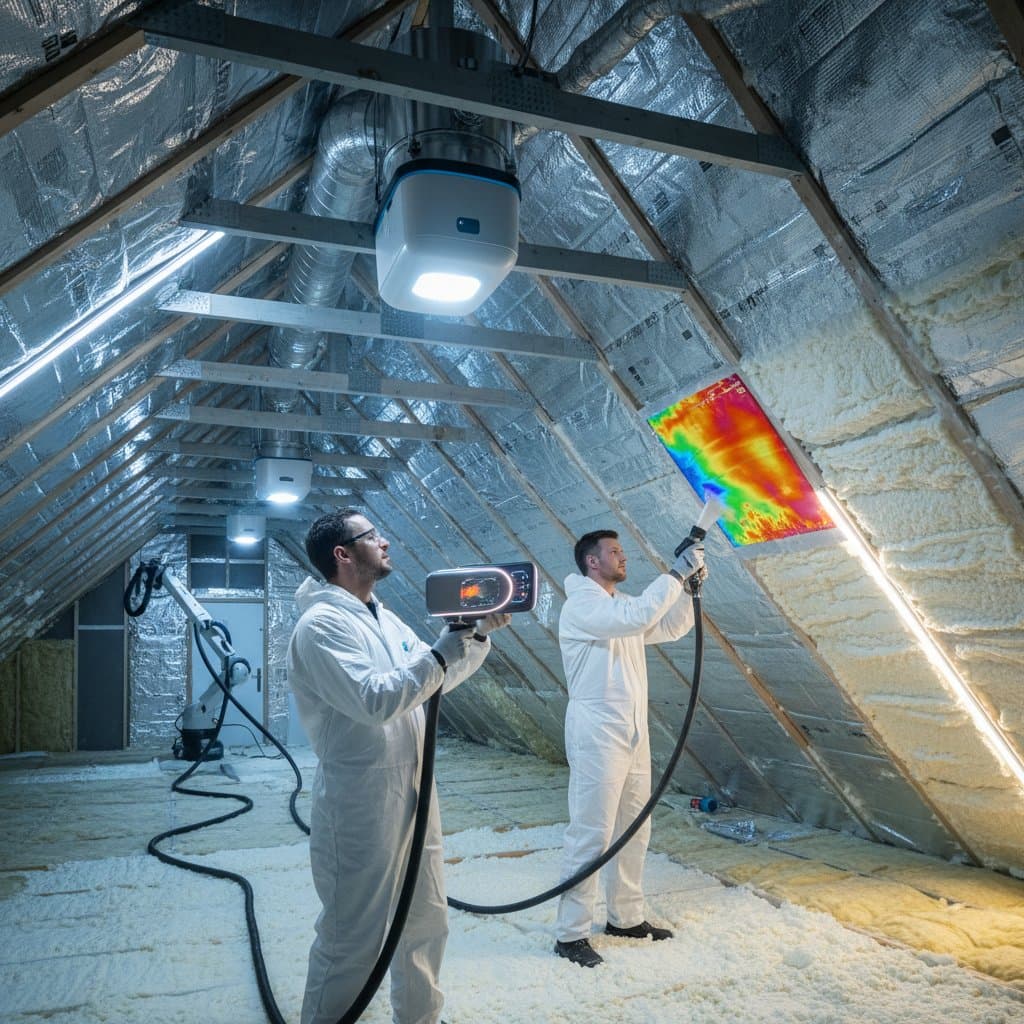Hidden Energy Leaks: How They Cost You 30% More Each Year
Energy leaks in homes often go unnoticed, yet they silently increase utility bills by up to 30% annually. These inefficiencies arise from poor insulation, drafts, and structural flaws that allow heat to escape during winter or cool air to flee in summer. Thermal imaging technology offers a powerful solution by visualizing these hidden issues, enabling homeowners to address them effectively and reclaim substantial savings.
Understanding Energy Leaks
Energy leaks occur when conditioned air escapes through gaps, cracks, or inadequate barriers in a home's envelope. Common culprits include unsealed windows, doors with worn weatherstripping, and attics with insufficient insulation. Over time, these vulnerabilities compound, leading to higher heating and cooling demands that strain both wallets and the environment.
Homeowners might notice uneven room temperatures or rising energy statements as indirect signs. However, many leaks remain invisible to the naked eye, making professional detection essential. Addressing them not only reduces costs but also enhances overall living conditions.
The Power of Thermal Imaging
Thermal imaging uses infrared cameras to detect temperature variations on surfaces, highlighting areas where energy escapes. In a typical scan, professionals capture images that reveal hot spots around outlets or cold bridges in walls. This non-invasive method provides a comprehensive map of inefficiencies without disrupting daily life.
The technology has advanced significantly by 2025, with higher resolution cameras offering precise diagnostics. Scans can identify issues like moisture trapped in walls, which further compromises insulation. By converting thermal data into visual reports, experts deliver clear insights that guide targeted repairs.
Benefits Beyond Bill Reduction
Conducting a thermal imaging audit yields immediate financial returns, with many homeowners recouping the investment within the first year. Average utility savings range from 20% to 30%, translating to hundreds of dollars annually depending on home size and location. These reductions stem from sealing leaks that previously forced heating systems to work overtime.
Beyond finances, improved energy efficiency boosts home resale value by up to 5% in competitive markets. Buyers increasingly prioritize sustainable features, and documented audits serve as proof of a well-maintained property. Health improvements follow as well, since eliminating drafts reduces mold growth and allergen circulation.
Environmental gains are equally compelling. By minimizing energy waste, households lower their carbon footprint, contributing to broader emission reductions. This aligns with global efforts to combat climate change, making individual actions part of a larger positive impact.
The Cost of an Audit and Expected Savings
A professional thermal imaging audit typically costs between $300 and $600, varying by home size and location. This fee covers the scan, a detailed report, and sometimes initial recommendations. While it represents an upfront expense, the payback period is short, often just one heating season.
For a standard three-bedroom home, sealing identified leaks might require $500 to $2,000 in materials and labor. However, these investments yield ongoing savings that far exceed the outlay. Long-term, they protect against rising energy prices and extend the lifespan of HVAC systems.
Steps to Identify and Fix Energy Leaks
Begin by scheduling a thermal imaging audit with a certified professional. Research local experts through home energy associations to ensure quality service. The process usually takes a few hours and requires minimal preparation, such as turning off electronics that could interfere with readings.
- Prepare your home by closing windows and doors before the auditor arrives.
- Review the generated report to prioritize fixes, starting with high-impact areas like the attic and foundation.
- Implement repairs using high-quality materials, such as spray foam for gaps or rigid board insulation for walls.
- Follow up with a second scan after six months to verify improvements and catch any new issues.
Homeowners can also perform preliminary checks using affordable infrared thermometers. Focus on areas around electrical outlets and baseboards, where temperature drops often indicate leaks. These DIY efforts complement professional audits and empower proactive maintenance.
Future-Proofing Your Home
Integrating thermal imaging into routine home care ensures long-term efficiency. As building codes evolve to emphasize sustainability, early adoption positions properties ahead of regulations. Smart thermostats and automated systems can further optimize performance based on audit findings.
This approach transforms potential vulnerabilities into strengths, creating resilient living spaces. Homeowners gain peace of mind knowing their investments yield comfort, savings, and sustainability. In an era of fluctuating energy markets, such strategies prove indispensable.
Realizing Lasting Efficiency Gains
Embracing thermal imaging unlocks a pathway to smarter energy management. Homeowners experience not just lower bills but also enhanced comfort and environmental stewardship. Take the first step toward a more efficient home today, and watch invisible leaks become sources of tangible value.








